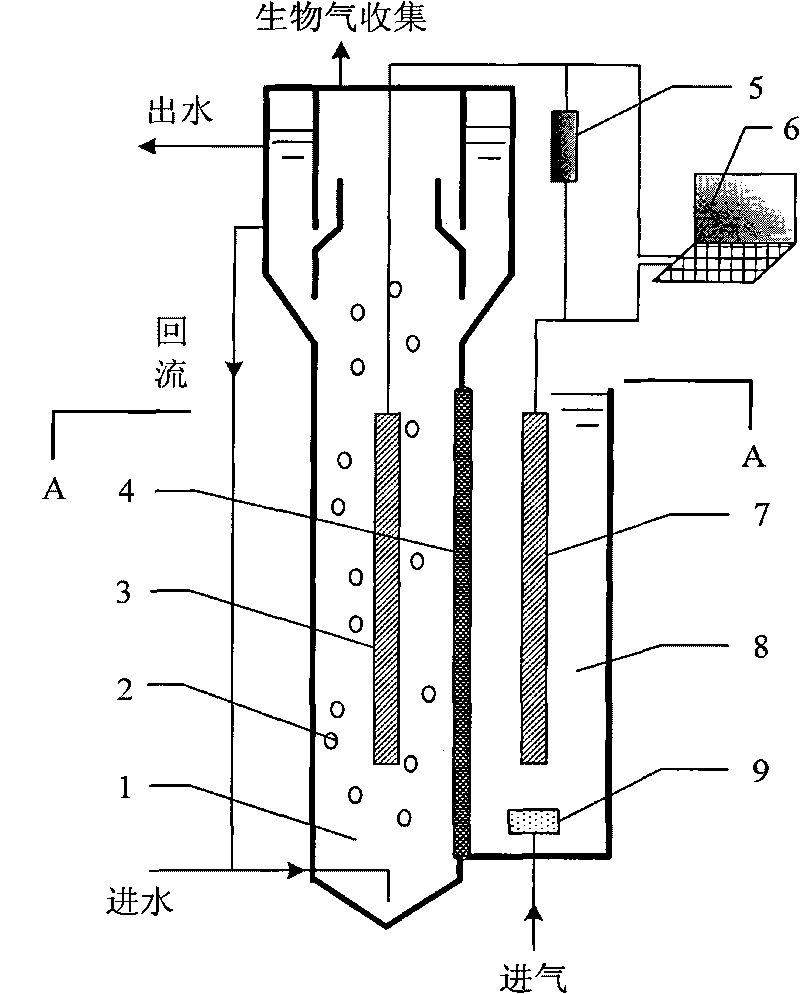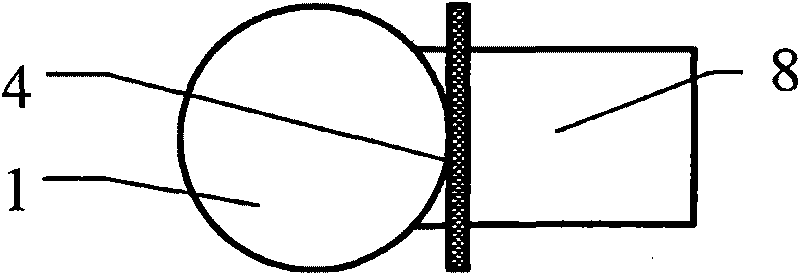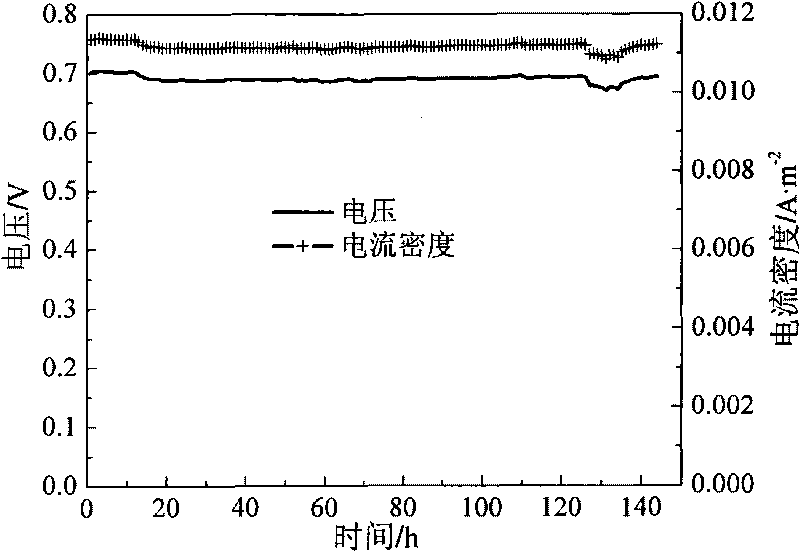Continuous and efficient wastewater treatment microbial fuel cell
A wastewater treatment and fuel cell technology, applied in biochemical fuel cells, fuel cells, biological water/sewage treatment, etc., can solve problems such as the difficulty of microbial fuel cells, and achieve improved scalability, enhanced metabolism, and enhanced treatment effects. Effect
- Summary
- Abstract
- Description
- Claims
- Application Information
AI Technical Summary
Problems solved by technology
Method used
Image
Examples
Embodiment 1
[0026] In this example, the performance of continuous high-efficiency wastewater treatment and synchronous power generation AFB dual-chamber microbial fuel cell using glucose water distribution and secondary digested sludge inoculation of sewage treatment plant was tested. The proton exchange membrane used is Nafion117 membrane, which has not been pretreated before use. The water inflow to the anode chamber is artificial glucose distribution water, and its pH is between 7 and 8. The filling amount of the particle carrier in the anode chamber is 16.5% (the ratio of the filling volume to the effective volume of the anode chamber). Oxygen is blown off. The liquid in the cathode chamber is tap water. The anode is 4×38.6 cm carbon paper, and the cathode is 3.5×38.5 cm carbon paper. The external resistance value used is 2000Ω. The voltage at both ends of the external resistance is measured and recorded by the computer using the new digital multimeter UT70B of Unilever, and the COD...
Embodiment 2
[0028] In this example, the electricity production and wastewater treatment performance of the AFB type dual-chamber microbial fuel cell with self-distribution water inoculated and cultivated successfully for continuous high-efficiency wastewater treatment and synchronous electricity generation when treating alcohol wastewater were tested. The pH of the treated alcohol wastewater raw water is 3.81, and the COD concentration is between 20,960 and 28,400 mg / L. Corresponding dilution and pH adjustment are carried out according to the needs of the experiment. The proton exchange membrane used is Nafion117 membrane, which has not been pretreated before use. The filling amount of the particle carrier in the anode chamber is 16.5% (the ratio of the filling volume to the effective volume of the anode chamber), and the liquid in the cathode chamber is tap water. The anode is 4×20 cm carbon paper, and the cathode is 3.5×30 cm carbon paper. The external resistance value used is 250Ω. Th...
PUM
| Property | Measurement | Unit |
|---|---|---|
| thickness | aaaaa | aaaaa |
Abstract
Description
Claims
Application Information
 Login to View More
Login to View More - R&D
- Intellectual Property
- Life Sciences
- Materials
- Tech Scout
- Unparalleled Data Quality
- Higher Quality Content
- 60% Fewer Hallucinations
Browse by: Latest US Patents, China's latest patents, Technical Efficacy Thesaurus, Application Domain, Technology Topic, Popular Technical Reports.
© 2025 PatSnap. All rights reserved.Legal|Privacy policy|Modern Slavery Act Transparency Statement|Sitemap|About US| Contact US: help@patsnap.com



